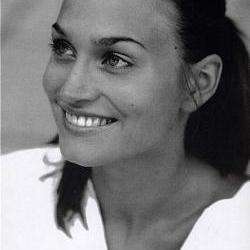“Acting is the expression of a neurotic impulse. It’s a bum’s life,” stated the late, great Marlon Brando. Felix Breisach took this idea to heart when staging his modernized Figaro as part of his psychotherapeutic treatment in a mental institution. Patients, including Susanna, Marcellina and Cherubino, act out the opera as part of their therapy in a stage/box at center stage. Count Almaviva is played by the head doctor, who directs and guides – handing out instruments to play, dropping props from above and forcing his wards into action.
The stage direction alone is mind-boggling. Groundskeeper Antonio plays chess with patients from the balcony on the second floor. Cherubino sings an aria to a shower of soap-bubbles blown from above by Basilio, and a well-dressed Rosina manages the books between shopping excursions and flirtations. By the end of the Act II, a full-on revolt against the controlling, overly touchy “Count” including pillow fights and overturned mattresses has taken place, and chaos reigns after the intermission. The rest of the patients (the Arnold Schoenberg Choir) parade around a doll on a mattress, drink booze and continue the revolt, which finally reaches a resolution with the doctor apologizing to his staff and patients and an uncertain peace dawning over the institution.
Although an interesting concept, this play within a play staging creates a discrepancy which is inherently extremely problematic. First of all, each character on stage is in fact two characters, creating direction problems in particular for the main roles. How can a Count/Doctor be surprised by the actions of his patients when he himself is in control of the stage book and effectively (and sometimes literally) pulling the strings?
More critically, one has to completely stop listening to the text of Da Ponte’s excellent and very specific libretto in order to deal with the fact that the characters are reflecting at best the emotion of what is being sung, but not in the least what is being described in any sort of literal way. The audacity of ignoring something so brilliantly constructed as the interplay of Mozart’s music with Da Ponte’s libretto in favour of another storyline can not help but fail, and it is understandable that the Regie was roundly booed at the première. This superimposed plot – despite a great deal of detail, interest and incredibly energy from all involved – is not nearly as interesting as what the libretto boasts, and ends up feeling a bit too confining long before the work has run its course.
That is not in the least to say that there are not some very interesting moments or that the evening is not worthwhile. On the contrary, musically the production is a treat. Les Musiciens du Louvre Grenoble under the baton of Marc Minkowski play with energy and brilliance which does not flag from the opening overture until the final curtain drops; the Act II finale was a particular thrill. Vocally the cast was equally strong; every singer with technique so competent that they were able to concentrate completely on expressively realizing their role. Stéphane Degout’s rich baritone was a standout as Almaviva. His exemplary timbre was well-paired with Alex Esposito’s energetic Figaro.
The excellent Anett Frisch’s soprano was full of light and musical flexibility as the Countess; she relaxed beautifully into her second aria for some outstanding moments. Emőke Baráth’s light soprano (as Susanna) was not only pinpoint accurate, but she grasped the opportunity to colour and shape phrases with risk and charm. Her final “Deh vieni” seemed suspended in time. It was a shame that Helene Schneiderman’s aria was cut (Marcellina's), as I would have loved to hear more of her. Ingeborg Gillebo’s Cherubino was boyish and slender and – spoiler alert – in this production he gets the girl! Sunnyboy Dladla (Basilio/Don Curzio), Peter Kálmán (Bartolo), Zoltán Nagy (Antonio) and young artist Gan-ya Ben-Gur Akselrod (Barbarina) rounded out the the cast well.
For all its problems and failures, the production is quite visually attractive (stage design: Jens Kilian, costumes: Doris Maria Aigner, light: Alessandro Carletti) and thought-provoking. Just as Da Ponte's libretto combined with Mozart's music, there is tragedy lying slightly below the surface of all this comedic farce if one scratches a bit at the surface. Just as issues of social class, abuse of power and sexual molestation lurk behind the corner in Da Ponte´s libretto, this production flirts with some of the same tricky issues.
Great energy, great music – full points for effort.




